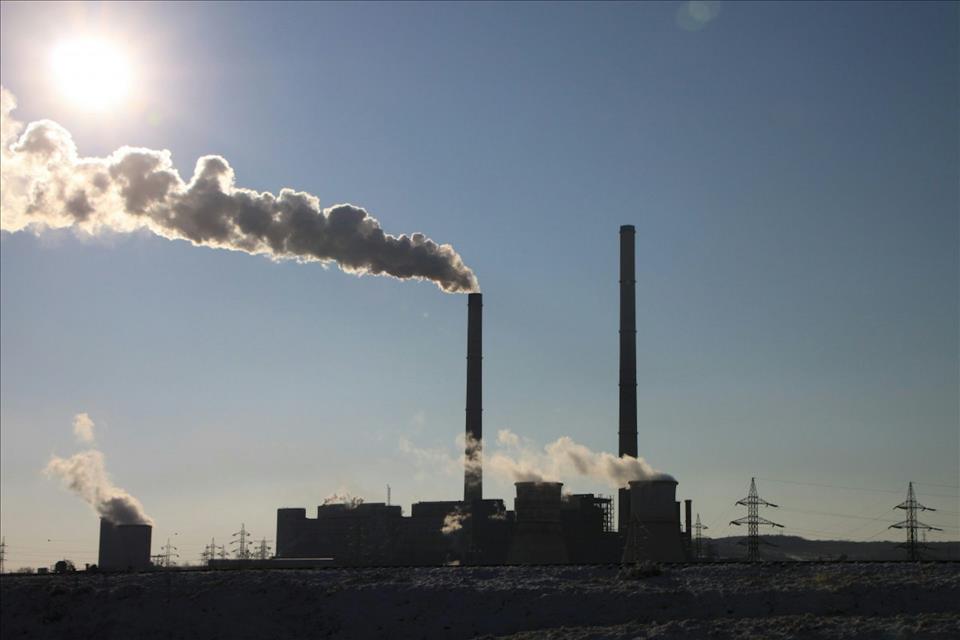
How Companies Calculate Their Carbon Footprints
To contribute their fair share of the effort to cut CO2 emissions, companies now dispose of a potentially powerful tool: internal carbon pricing (ICP), also known as“shadow carbon pricing”. First thought up following the Kyoto Protocol in 1997, which laid the foundations for carbon pricing and offsets, shadow carbon pricing is a voluntary method for companies to estimate the costs of their greenhouse gas emissions to society, even when all or part of their operations are out of the scope of external carbon regulations.
My research at the EDHEC Risk Climate Impact Institute seeks to test the robustness of these accounting methods in the private sector and its complex modelling .
Influencing future decisionsTo come up with a shadow carbon price, companies need to assess both their direct and indirect emissions from their own sources, but also their energy use, supply chain operations and waste management. Direct emissions come from sources owned or controlled by the company such as emissions from combustion in a company's boilers or from its vehicle fleet. Indirect emissions are estimated on the basis of purchased energy such as electricity, heat or cooling. Finally, other indirect emissions in the supply chain are factored in, such as transportation of materials or waste disposal.
Also taken into consideration are current and estimated future carbon prices. This complex process is critical to understand the pattern of carbon prices over the long term, and how they might impact companies' performance in the future. To reach such estimations, the company must assess the climate policies in place in the countries where it operates and those where it plans to expand. Companies should also factor in potential major political, technological and economic developments that could lead to significant changes in the price of carbon in each of the target countries.
Only with the information above will companies finally be able to set their internal carbon price. To determine the price for a ton of CO2, they can use the current market transactions – in Europe, for example, it is known as the EU Emissions Trading System . In other markets, carbon tax rates can be found in national tax laws .
Impact on company valuationOn top of optimising companies' decision-making processes, this tool also helps companies to improve communication with investors. An increasing number of climate-aware investors are poring over the plans disclosed by companies to deliver on the transition to a low-carbon world, and what firms assume as ICP validates the credibility of the long-term strategy and of corporate actions to successfully compete in a dangerously warm planet. As carbon-related risks can have a significant impact on a company's cash flow, it makes financial sense to integrate this“carbon price” into the company's valuation.
For example, when an energy company has to make a decision regarding a new plant, they can calculate and compare the expected costs of a fossil fuel-based choice versus a renewable energy choice. A baseline valuation that does not consider the future likely increase of carbon prices may easily show that traditional more polluting sources of energy are more convenient. However, when the valuation also includes the future expected evolution of carbon prices, the costs associated to the future carbon footprint may become so prohibitive that the company would realise the financial convenience of switching to a cleaner source of energy.
This way they can make informed decisions that include the shadow cost of carbon use, improving the quality of financial investments. Ultimately, carbon risk assessment isn't just an important step in the global fight against climate change, it also helps companies and investors navigate the complex challenges of a rapidly changing business landscape.
A patchwork of regulationsStill, current regulations regarding environmental policies vary widely between countries. As a result, carbon prices ranged from 1 cent to more than $130 per ton in 2023 (World Bank ) – a textbook example, if there ever was one, of how stronger climate policies could spur greener business decisions.
As climate change policies and carbon prices evolve rapidly, companies will increasingly need to measure their exposure to carbon risks . In fact, managing carbon risk should be treated as importantly as any other traditional risk within the company, such as compliance or currency risks.
This article was originally published in French

Legal Disclaimer:
MENAFN provides the information “as is” without warranty of any kind. We do not accept any responsibility or liability for the accuracy, content, images, videos, licenses, completeness, legality, or reliability of the information contained in this article. If you have any complaints or copyright issues related to this article, kindly contact the provider above.
Most popular stories
Market Research

- Manuka Honey Market Report 2024, Industry Growth, Size, Share, Top Compan...
- Modular Kitchen Market 2024, Industry Growth, Share, Size, Key Players An...
- Acrylamide Production Cost Analysis Report: A Comprehensive Assessment Of...
- Fish Sauce Market 2024, Industry Trends, Growth, Demand And Analysis Repo...
- Australia Foreign Exchange Market Size, Growth, Industry Demand And Forec...
- Cold Pressed Oil Market Trends 2024, Leading Companies Share, Size And Fo...
- Pasta Sauce Market 2024, Industry Growth, Share, Size, Key Players Analys...





















Comments
No comment